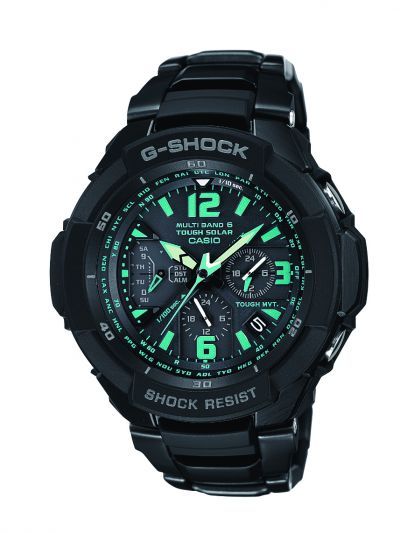Iconic timepiece brought down to Earth

Your support helps us to tell the story
From reproductive rights to climate change to Big Tech, The Independent is on the ground when the story is developing. Whether it's investigating the financials of Elon Musk's pro-Trump PAC or producing our latest documentary, 'The A Word', which shines a light on the American women fighting for reproductive rights, we know how important it is to parse out the facts from the messaging.
At such a critical moment in US history, we need reporters on the ground. Your donation allows us to keep sending journalists to speak to both sides of the story.
The Independent is trusted by Americans across the entire political spectrum. And unlike many other quality news outlets, we choose not to lock Americans out of our reporting and analysis with paywalls. We believe quality journalism should be available to everyone, paid for by those who can afford it.
Your support makes all the difference.Casio Computer Co. is about to release the latest models in its long line of iconic G-Shock watches, the GW-3000 series designed to stand up to the rigors imposed on pilots competing in the Red Bull Air Race World Championship.
The new line - which goes on sale in Japan on February 28 with a price tag of between Y34,000 (€279.40) and Y47,000 (€386.25) - incorporates a range of cutting-edge technologies, including resistance to centrifugal force and gravity to ensure the mechanism continues to operate perfectly in extreme conditions.
For non-pilots, the bold numbers and the function that links the watch with a standard time wave emitted by transmitters around the world and automatically synchronizes time might be more useful.
The global market for watches has declined from a high marked in 2004, primarily due to the popularity of mobile phones and the new functions that are constantly being added to them. Famous names such as Seiko, Citizen and Casio have become synonymous with combining know-how with stylish designs but Japanese manufacturers have been losing ground in the domestic market to luxury Swiss brands - as well as to mobile phones. But Casio has high hopes for the latest incarnation of a watch that was first released in 1983.
Kikuo Ibe designed the very first G-Shock watch - the G stands for gravity - taking timepieces off in a very different direction from the popular designs of the day. At that point, the trend was for thinner and lighter watches. Twenty-seven years later, Casio has sold more than 70 million G-Shock units around the world - and its rivals have realized that slim is not everything.
Casio famously broadcast a TV commercial in the United States in 1984 in which a G-Shock watch was used as a puck in an ice hockey game. Some people claimed the commercial was faked, but Casio's technology came through in demonstrations on a nationally broadcast TV program.
G-Shock watches quickly became popular among skateboarders and young people conscious of street fashion in the US and their photographs - looking cool and sporty - eventually appeared in Japanese magazines. Around 1990, the brand took off in Japan and around the world.
Some of the best-selling watches have been the GWF-1000, an ISO-certified diver's watch, and the DW-6900, which caught the eye with its color permutations, while in overseas markets, the GW-9200 was popular in France.
The latest watches incorporate the radio-wave technology that constantly makes sure they display the correct time - ensuring an estimated error rate of less than one second in every 100,000 years - and having a bezel that is coated with urethane to make sure it does not scratch the canopy or indicators in the cockpit of a competition aircraft.
So now pilots do not have to worry about handling with care.
JR
Join our commenting forum
Join thought-provoking conversations, follow other Independent readers and see their replies
Comments